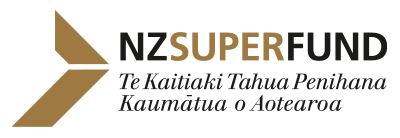Media statements
Taranaki Offshore Partnership marks significant offshore wind project milestone
POSTED ON: 8 June 2023
Share:
Taranaki Offshore Partnership, a joint venture between Copenhagen Infrastructure Partners and NZ Super Fund, is set to deploy the first piece of physical offshore wind technology in New Zealand, a Floating Light Detecting and Ranging device (FLiDAR).
To be stationed 37km off the coast of Patea in the South Taranaki Bight for one year, the FLiDAR will measure wind speeds at heights of up to 300m, waves and currents to provide data critical for assessing the feasibility of the proposed offshore wind farm.
Taranaki Offshore Partnership’s Giacomo Caleffi says this is a key part of its feasibility investigations, bringing potential offshore wind development, and its benefits, another step closer for New Zealand.
“Offshore wind is one of the fastest-growing renewable energy technologies globally, as it enables renewable energy generation at scale and complements other forms of renewable energy, for example generating electricity when other technologies might not,” says Mr. Caleffi.
New Zealand has over 80% renewable electricity already, but across the economy – including transport and industrial heat – the proportion of all energy that is renewable is around 40%. To meet emissions reduction targets will require greater electrification and significant new sources of renewable energy.
Taranaki Offshore Partnership’s proposed offshore wind farm would produce up to 1GW of electricity, comparable to some of the largest hydroelectric power plants in the country, capable of meeting over 11 per cent of New Zealand’s current electricity demand.
“We’re excited to be part of New Zealand’s transition to producing more home-grown clean energy to support decarbonisation of the economy, leveraging our proven experience of developing and operating offshore wind farms around the world,” says Mr. Caleffi.
Copenhagen Infrastructure Partners and its development arm, Copenhagen Offshore Partners, has a portfolio of 12 operational, under construction and in-development offshore wind projects in North America, Europe, Asia and Australia, cumulatively representing total capacity of ~30 GW.
“As well as delivering renewable energy at scale, the development of an offshore wind industry in Taranaki will also create new opportunities for skilled workers smoothing the region’s transition away from emissions intensive industries,” says Mr Caleffi.
The international FLiDAR specialists currently in New Zealand to deploy the device are training a local crew in Taranaki to operate and maintain that equipment for the year. Construction and operation of the offshore wind farm, subject to feasibility assessments and regulatory settings, would create many more jobs locally.
“There’s still a long way to go in our feasibility investigations, including a number of environmental impact studies and extensive iwi and community engagement, but deploying the FLiDAR reflects the momentum building around this project and the creation of an offshore wind industry in New Zealand,” says Mr Caleffi.
ENDS
Media Contact: Maddie Cook 020 4191 0175
